Dually-controlled ATRP of pH-sensitive PDMAEMA brushes inspired by sustainable chemistry
Monika Flejszar (a) Paweł Chmielarz (a) Joanna Smenda (b) Karol Wolski (b) (a) Department of Physical Chemistry, Faculty of Chemistry, Rzeszow University of Technology, Al. Powstańców Warszawy 6, 35-959 Rzeszów, Poland (b) Faculty of Chemistry, Jagiellonian University, Gronostajowa 2, 30–387 Kraków, Poland
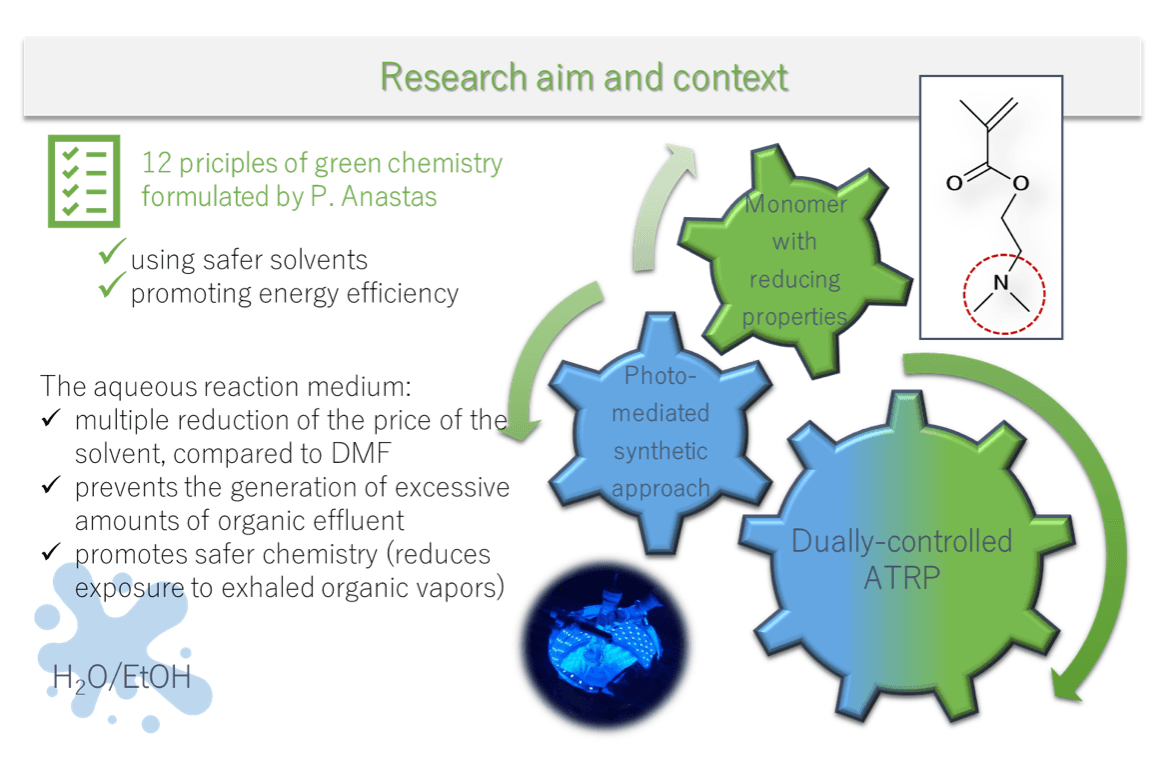
As a part of my PhD work, I am carrying out syntheses of functional polymer brushes using low-ppm ATRP techniques. My lasted project concerned dually-controlled ATRP used for synthesis of pH-sensitive polymer brushes. Based on the 12 principles of green chemistry (see Research aim and context slide), the possibility of the synthesis of cationic PDMAEMA brushes in environmentally favorable aqueous medium, water-alcohol mixture as well as commercially available alcoholic beverages (three types of traditional Polish vodka and spirit) via photo-ATRP were presented.
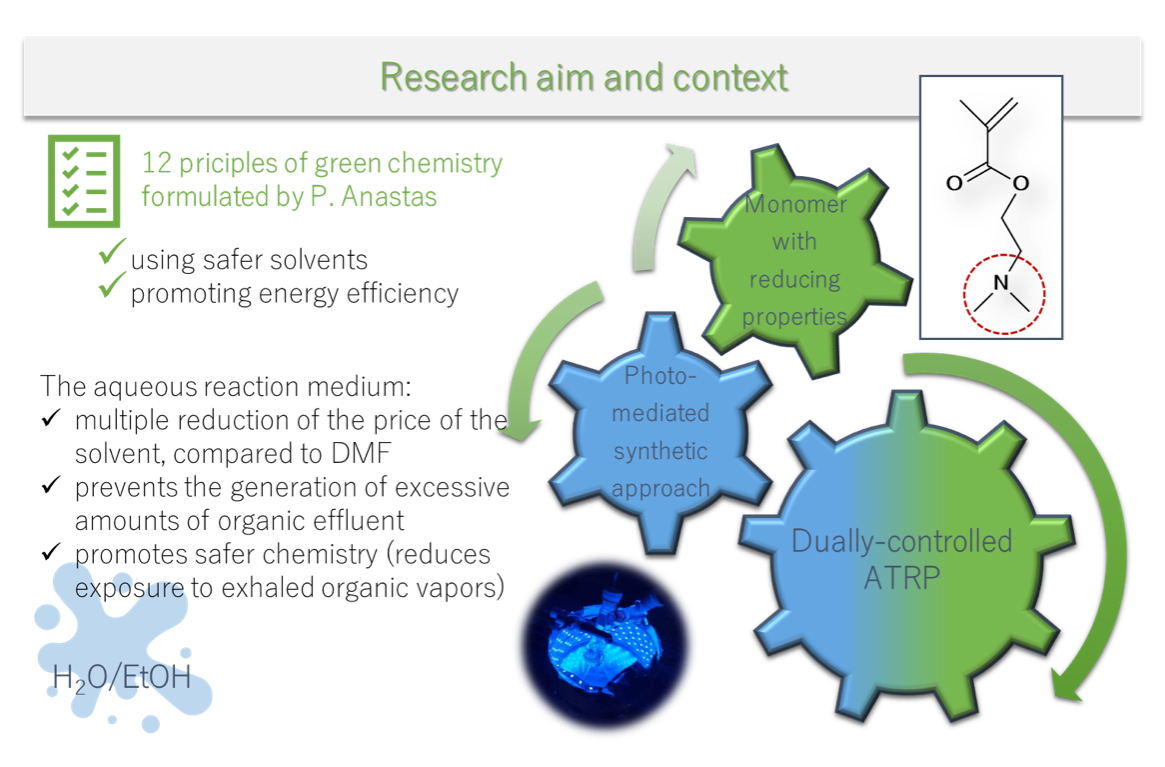
Looking for economical and original solutions for ATRP, commercially readily available alcohols were tested as a perfect solvents for PDMAEMA synthesis (see PhotoATRP of DMAEMA in alcoholic drink slide). Synthesis were carried out in Polish produced spirit (~95% EtOH), pure vodka awarded for quality at the International Spirit Challenge (Żołądkowa de Luxe, ~ 40% EtOH), one of the cheapest and commonly available in Poland pure grain vodka (Wódka Parkowa, ~38% EtOH) as well as world-famous and unique for its production Bison Grass Vodka (~37.5% EtOH). In the in the manufacturing process of the Bison Grass Vodka, rye rectified spirit is mixed with a decoction of fragrant turf (Hierochloë odorata) - a species of grass commonly called bison grass, growing in the Bialowieza Forest in Poland.
For all tested solvents, the natural logarithm of the monomer concentration versus polymerization time was close to linear, being in agreement with the first-order kinetic model (PhotoATRP of DMAEMA in alcoholic drink slide, Fig. a). The reactions were carried out at a relatively high targeted degree of polymerization (DPtarget = 2,400) to subsequently reproduce the reaction conditions for grafting of PDMAEMA brushes from the silicon wafers (see Grafting from Si wafers slide). The use of high DP resulted in homopolymer chains with Mn = 75,000–100,000 (about 30% monomer conversion) in less than 1.5 h (PhotoATRP of DMAEMA in alcoholic drink slide, Fig. b). Interestingly, the Bison Grass Vodka significantly shortened the reaction time (kpapp = 0.55 h-1) while maintaining low dispersity of the obtained polymer product (Mw/Mn = 1.17).
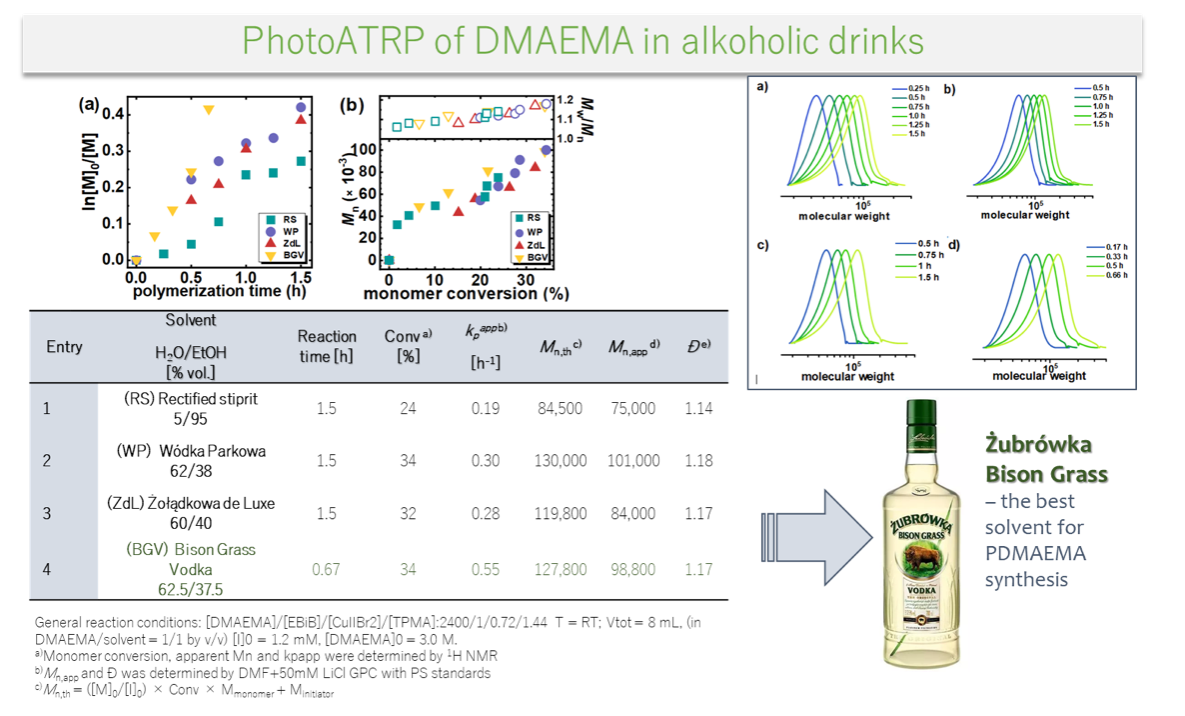
Encouraged by the promising effects of homopolymerization of DMAEMA in an aqueous solution, grafting of PDMAEMA brushes from the brominated silicon wafers was performed. In order to investigate the differences resulting from the use of commercially available alcohols, synthesizes were carried out using a mixture of pure chemical reagents ethanol:water mixture using 2:3 ratio (40% vol. EtOH) and Bison Grass Vodka (37.5% vol. EtOH). The results were summarized in Grafting from Si wafers slide.
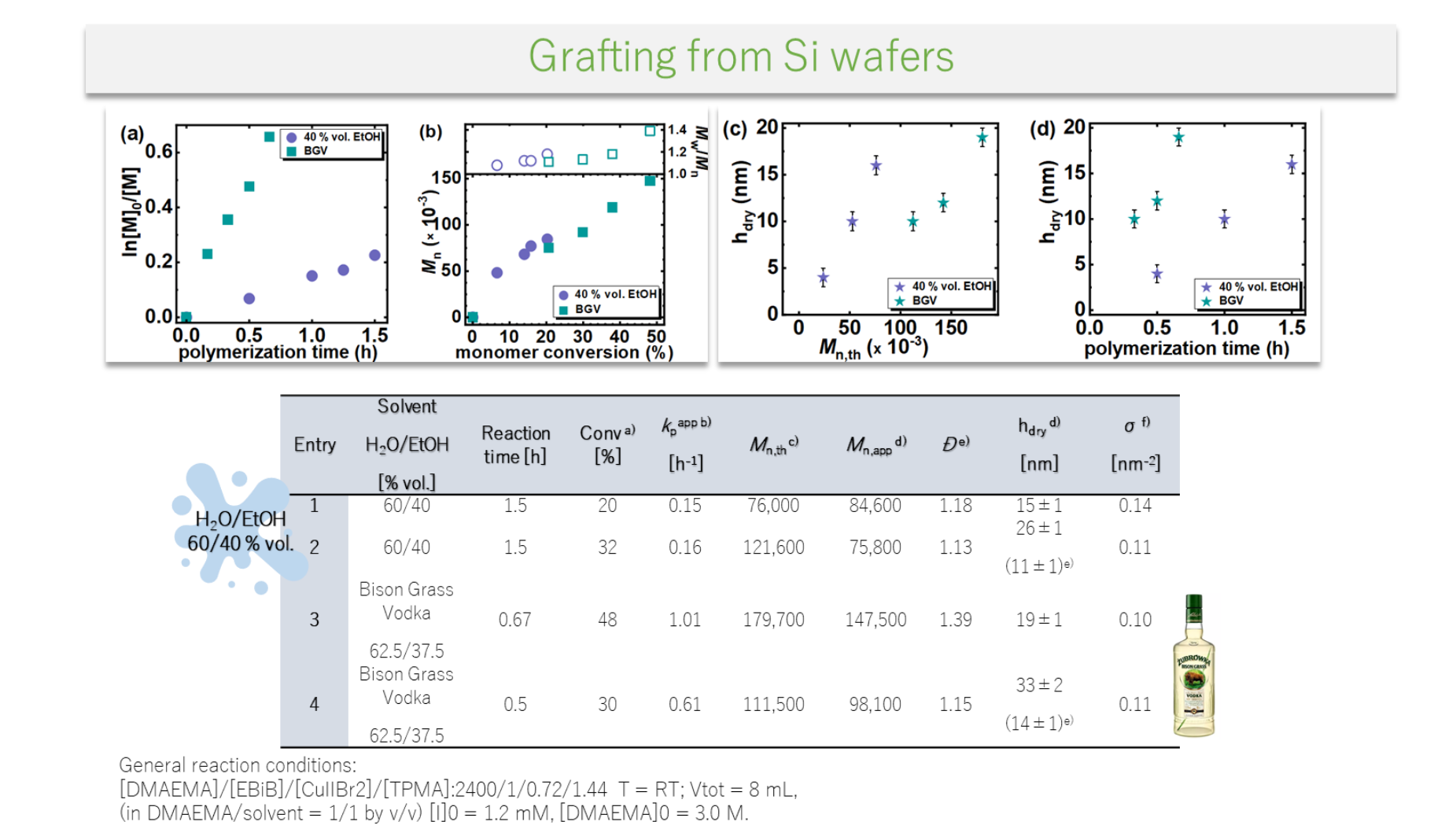
In order to determine the pH responsive behavior of the PDMAMEA brushes, their thicknesses were evaluated by AFM in different pH. The sample with the dry thickness of 35 ± 2 nm was chosen for this experiment (see Characteristic of pH-sensivity slide, Fig. a). The swelling ratio (α=hwet/hdry) of the brushes was the highest (α = 3) in the solution with the lowest pH (pH = 3). It is associated with extensive protonation of tertiary amine groups in PDMAMEA chains.
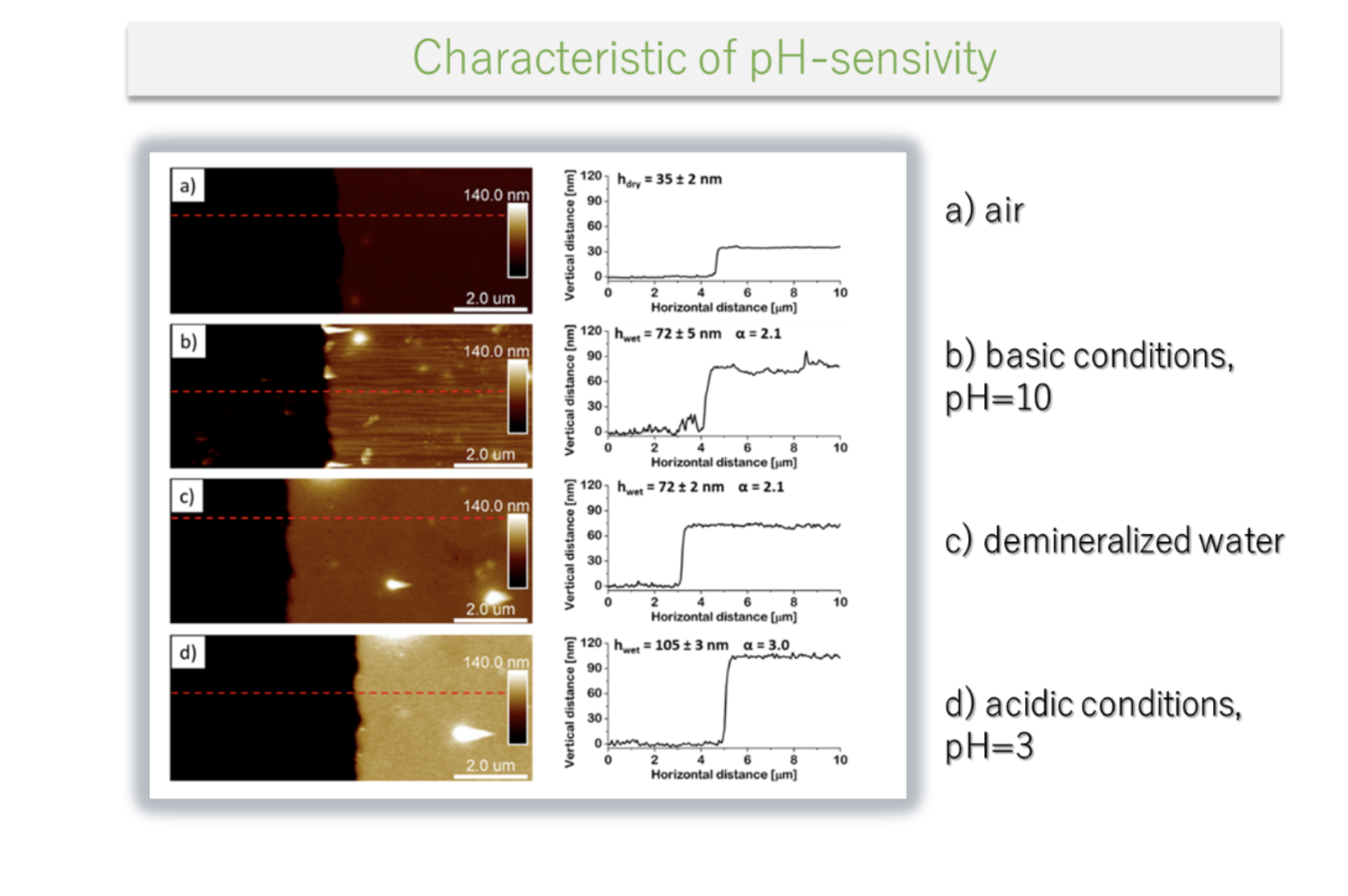
The development of fully eco-friendly synthetic systems allowing the preparation of hybrid materials with well-defined characteristics and predefined properties remains an ongoing challenge for the experimenters. Herein, a new method for the synthesis of pH-responsive polymer brushes from flat surfaces in the water-based medium as well as alcoholic beverages was presented. By changing the charge of the grafted PDMAEMA brushes the designed material can be applied for controlled adsorption of proteins or release of polyanionic substances. Following the principles of green chemistry, a system using safer solvents (aqueous medium) while promoting energy efficiency (reaction carried out at ambient temperature) was successfully presented.
Detailed results from the project were described here: https://doi.org/10.1016/j.polymer.2021.123905